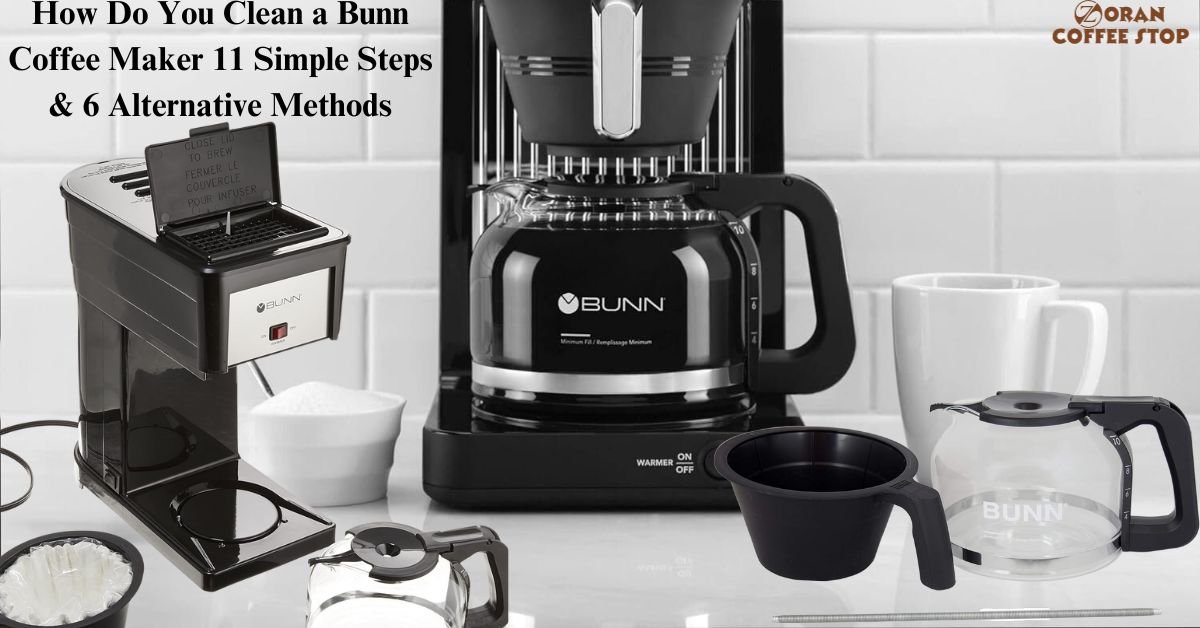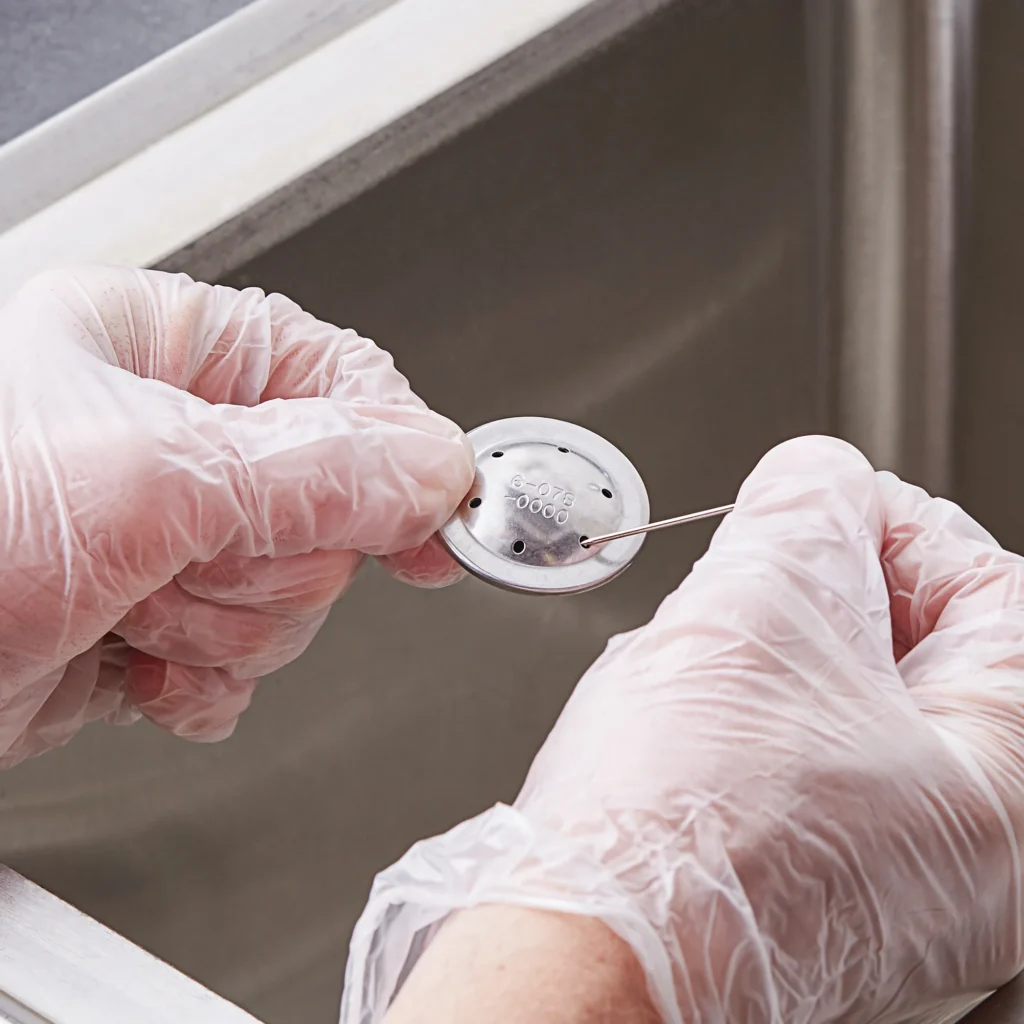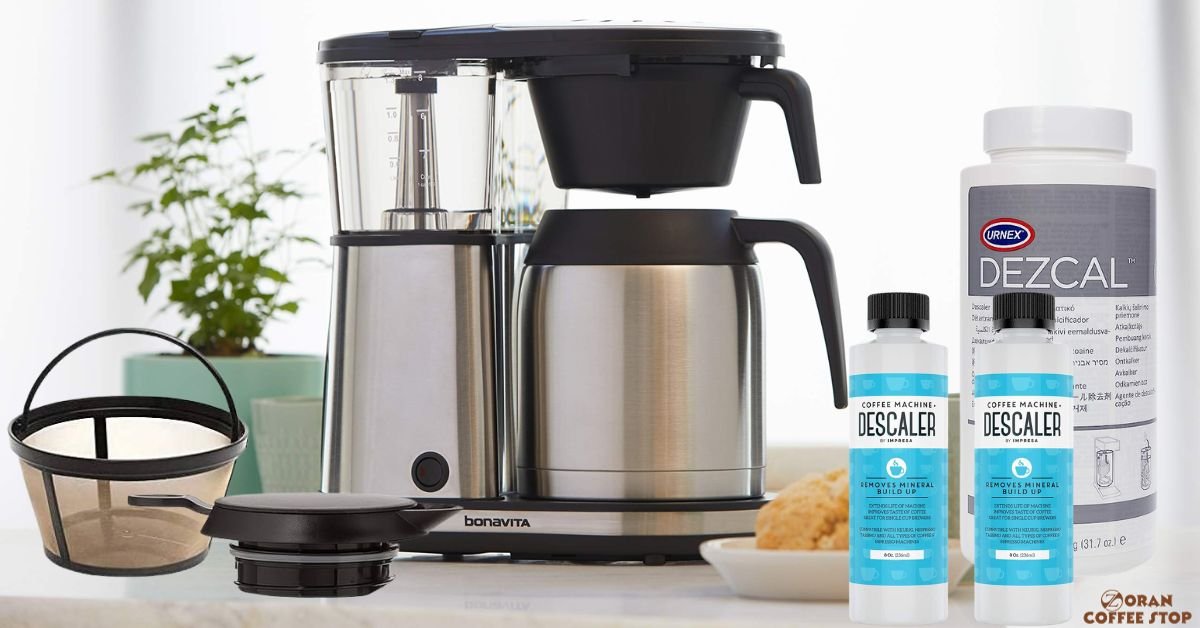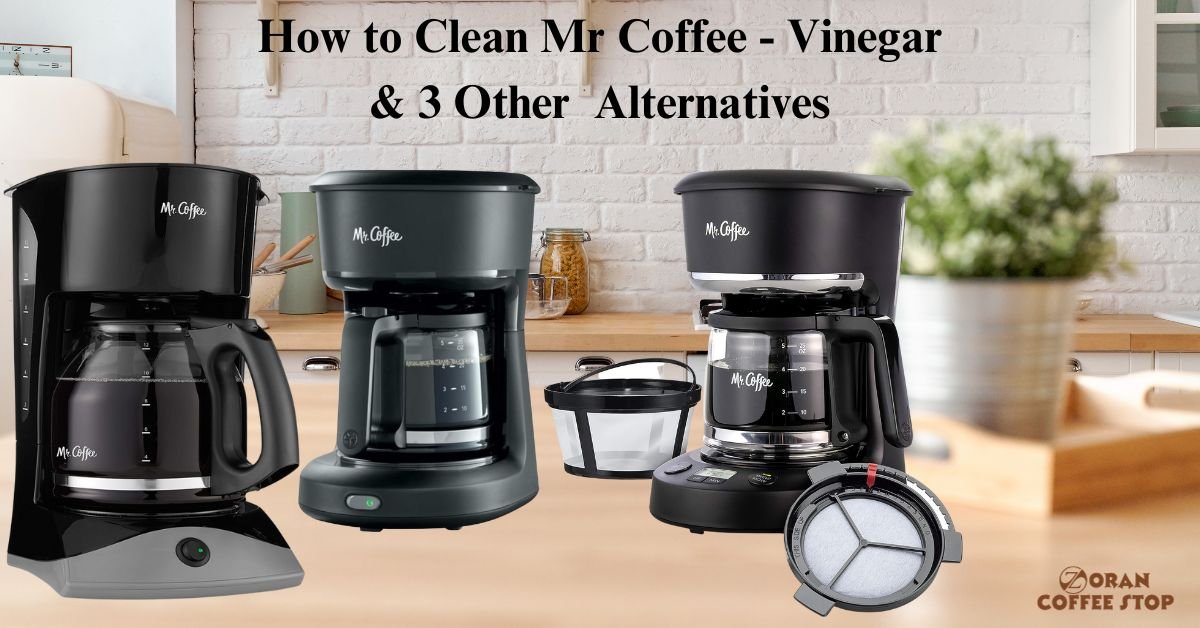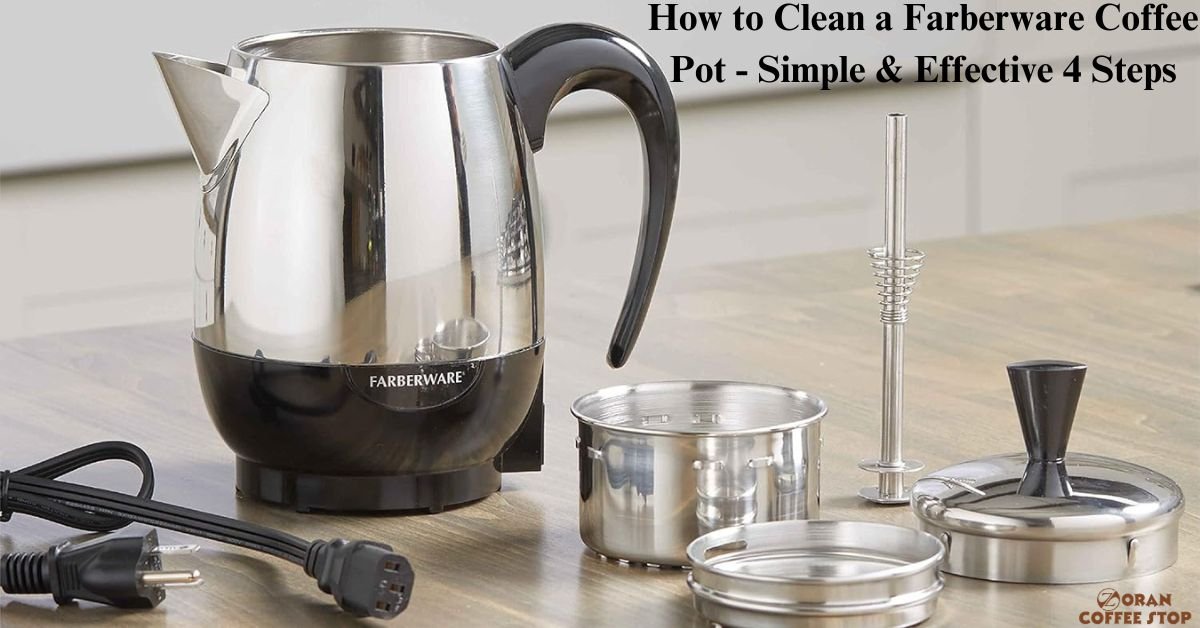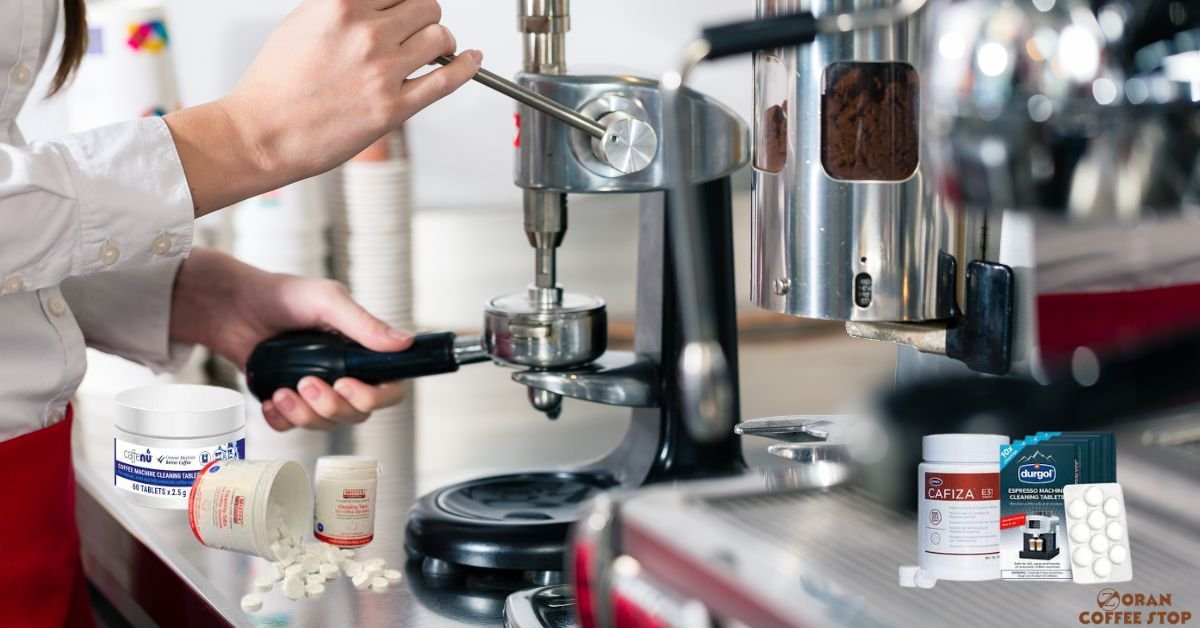Coffee is an essential part of many people’s daily routine, and a Bunn coffee maker is a popular choice for those who value a quick and reliable brewing process. But the reason why we are here is How Do You Clean a Bunn Coffee Maker to ensure that your Bunn coffee maker continues to deliver a perfect cup of coffee and why it’s crucial to clean it regularly?
Cleaning your Bunn coffee maker regularly is important for a few reasons. First, it will help to ensure that your coffee maker is brewing the best possible cup of coffee. Over time, coffee oils and residue can build up inside your coffee maker, which can affect the taste of your coffee. Second, cleaning your coffee maker will help to extend its lifespan. By removing mineral deposits and other build-up, you can keep your coffee maker in good working condition for longer.
In this comprehensive guide, we will walk you through the importance of cleaning your Bunn coffee maker. Discover why cleaning is crucial, how often you should perform it, the benefits it brings, various alternative methods and, most importantly, the step-by-step instructions to ensure your machine operates at its best.
Why is it Important to Clean Your Bunn Coffee Maker Regularly?
Cleaning your Bunn coffee maker regularly is not just a matter of aesthetics; it’s about maintaining the performance and longevity of your beloved coffee machine. Over time, coffee oils, mineral deposits, and residue from water can accumulate within the coffee maker. This buildup can lead to several issues, such as:
- Residue and oil buildup can affect the flavor of your coffee, making it taste bitter or off.
- Mineral deposits can clog the spray head and water lines, causing the coffee maker to malfunction.
- Failure to clean your Bunn coffee maker can lead to electrical issues and even pose a safety hazard.
How Often Should You Clean Your Bunn Coffee Maker?
The frequency of cleaning your Bunn coffee maker depends on several factors. If you use your coffee maker daily, you may need to clean it every week. If you use your coffee maker less often, you can probably get away with cleaning it every month or two. However, if you live in an area with hard water, you may need to clean it more frequently. Regular maintenance will ensure your coffee maker operates at its best.
Benefits of Cleaning Your Bunn Coffee Maker
Cleaning your Bunn coffee maker offers several benefits:
- A clean coffee maker ensures that your coffee tastes as intended, without any unpleasant aftertaste.
- Regular cleaning prevents mineral buildup, prolonging the life of your coffee maker.
- A clean machine operates more efficiently, saving energy and potentially reducing your electricity bill.
- Reduced risk of bacteria and mold growth.
How to Clean a Bunn Coffee Maker
To clean your Bunn coffee maker, you will need the following materials:
- Vinegar/Lemon juice/Baking Soda/Citric Acid (Only one of them)
- Distilled water
- Mild dish soap
- Soft cloth
- Toothpick (optional)
11 Steps Guide to Clean Your Bunn Coffee Maker Efficiently
- Turn off and unplug the coffee maker.
- Remove the carafe and filter basket.
- Rinse the carafe and filter basket with warm water to remove any coffee grounds or residue.
- Clean the spray head. (Optional) If your Bunn coffee maker has a spray head, remove it and clean it with a soft cloth and mild dish soap. You can also use a toothpick to remove any mineral deposits.
- Fill the water reservoir with a vinegar solution. Mix one part vinegar to two parts distilled water in the water reservoir.
- Run a brewing cycle. The vinegar solution will help to remove any mineral deposits or build-up inside the coffee maker.
- Let the vinegar solution sit in the coffee maker for 30-60 minutes. This will give the vinegar time to work its magic.
- Run another brewing cycle with water only to rinse out the vinegar solution. It is important to rinse the coffee maker thoroughly to remove any residual vinegar.
- Wipe down the exterior of the coffee maker with a damp cloth.
- Wash the carafe and filter basket in warm, soapy water.
- Dry the carafe and filter basket with a clean cloth that’s all now brew your cup and enjoy your coffee.
Cleaning the Spray Head
To clean the spray head, remove it from the coffee maker, rinse it under warm water to remove loose coffee grounds or residue. Subsequently, fill a small bowl with a mixture of one part vinegar to two parts distilled water. Place the spray head in the bowl and let it soak for 30-60 minutes.
After the soak, use a soft cloth to gently scrub away any mineral deposits. For stubborn deposits, a toothpick can be employed. Rinse the spray head under warm water and dry it with a clean cloth.
How do you clean a Bunn without vinegar?
While vinegar is a common and effective cleaning agent for coffee makers, you can clean your Bunn coffee maker without it if you prefer to avoid the vinegar smell or taste.
Hydrogen peroxide
Hydrogen peroxide is a natural oxidizing agent that can be used to clean and disinfect surfaces. It is also effective at removing mineral deposits. To clean a Bunn coffee maker with hydrogen peroxide, mix one part hydrogen peroxide to two parts water in a bowl or cup. Run the solution through a brewing cycle. Then, run two or three brewing cycles with water only to rinse out the hydrogen peroxide solution.
Oxygen bleach
Oxygen bleach is a non-chlorine bleach that is safe to use on coffee makers. It is effective at removing stains and mineral deposits. To clean a Bunn coffee maker with oxygen bleach, mix one part oxygen bleach to four parts water in a bowl or cup. Run the solution through a brewing cycle. Then, run two or three brewing cycles with water only to rinse out the oxygen bleach solution.
Here are 4 more alternative methods
These alternative cleaning methods can help you maintain your Bunn coffee maker without the use of vinegar, allowing you to choose the one that suits your preferences and eliminates any unwanted smells or tastes.
1. Lemon Juice Solution
- Instead of vinegar, you can use lemon juice. Mix equal parts of lemon juice and water in the water reservoir. Lemon juice has natural acidity that can help break down mineral deposits.
- Run a brewing cycle with the lemon juice solution. This will help clean the internal components of your coffee maker.
- After the brewing cycle is complete, rinse the coffee maker by running a cycle with plain water at least twice to remove any residual lemon juice.
- Don’t forget to clean the exterior of the coffee maker, as well as the carafe and filter basket, as mentioned in the main cleaning guide.
- To ensure there’s no lingering lemony flavor, run an additional cycle with just water.
2. Baking Soda Solution
- Mix a solution of one to two tablespoons of baking soda with water.
- Pour the baking soda solution into the water reservoir.
- Let the baking soda solution sit in the coffee maker for 30 minutes.
- Run a brewing cycle.
- Rinse thoroughly by running plain water through the coffee maker a few times.
- Wipe down the exterior and clean the carafe and filter basket as usual.
3. Citric Acid Solution
- Citric acid is another excellent alternative to vinegar. You can find citric acid powder at many stores.
- Mix a solution by dissolving one to two tablespoons of citric acid powder in water.
- Pour the citric acid solution into the water reservoir.
- Run a brewing cycle.
- Rinse thoroughly with plain water to remove any residual citric acid.
- Clean the exterior and accessories as needed.
4. Dish Soap and Water
- For a mild cleaning, you can use a solution of mild dish soap and water.
- Mix a few drops of mild dish soap with water in the water reservoir.
- Run a brewing cycle.
- Rinse thoroughly by running plain water through the coffee maker multiple times.
- Don’t forget to clean the exterior, carafe, and filter basket as part of the cleaning process.
My Recommendation
These methods offer an alternative to vinegar-based cleaning, leaving your Bunn coffee maker refreshed and ready to brew without any vinegar scent or taste. I recommend using a baking soda solution to clean your Bunn coffee maker. It is a natural and safe cleaning solution that is effective at removing mineral deposits and residue. It is also relatively inexpensive and easy to find.
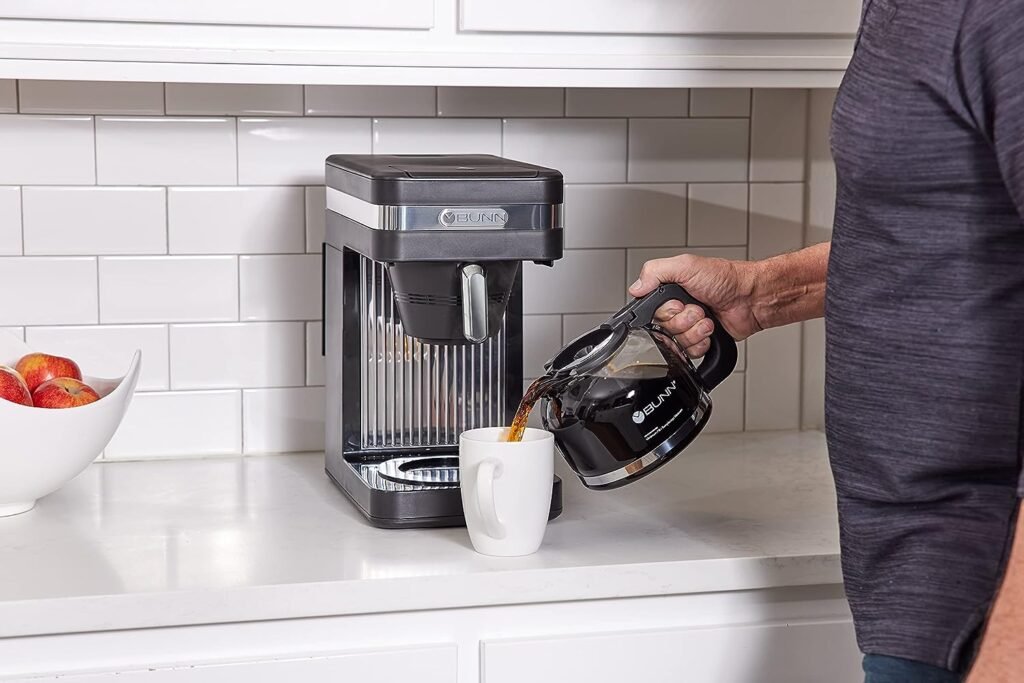
Troubleshooting Common Problems with Bunn Coffee Makers
Here are a few common problems with Bunn coffee makers and how to troubleshoot them:
| Problem | Solution |
|---|---|
| The coffee maker is not brewing properly. | • Check the water reservoir is full • Ensure the coffee maker is plugged in • Clean the spray head • Clear any mineral deposits clogging water lines |
| The coffee is tasting bitter. | Descale your coffee maker. Refer to the “How to Descale Your Bunn Coffee Maker” section below. |
| The coffee maker is leaking. | • Ensure the carafe is properly inserted • Avoid overfilling the water reservoir • Contact Bunn customer support if the issue persists. |
Simple 7 Steps to Descale Your Bunn Coffee Maker
Descaling is crucial for maintaining your Bunn coffee maker. To do this:
- Fill the water reservoir with a descaling solution designed for coffee makers, following the product label’s instructions. You can buy our researched best descaling solution on Amazon.
- Place a carafe under the brew basket.
- Run a brewing cycle.
- Let the descaling solution sit in the coffee maker for 30-60 minutes.
- Run another brewing cycle with water only to rinse out the descaling solution.
- Repeat steps 4 and 5 until the water runs clear.
- Wipe down the exterior of the coffee maker with a damp cloth.
Here are some more guides related to descaling your coffee makers;
- How to Clean Mr Coffee – Vinegar & 3 Other Alternatives
- How to Descale Your Breville Precision Brewer In Just 3 Steps
- How to Descale Cuisinart Coffee Maker 8 Steps Guide
Conclusion
In conclusion, maintaining and cleaning your Bunn coffee maker is essential for both the taste of your coffee and the longevity of your machine. Regular cleaning prevents residue buildup, ensures a great cup of coffee, and extends the life of your coffee maker. Remember to follow the step-by-step instructions provided in this guide, including cleaning the spray head and descaling your coffee maker when necessary.
By keeping your Bunn coffee maker clean and well-maintained, you’ll enjoy consistently delicious coffee and the peace of mind knowing that your machine is operating efficiently. So, don’t overlook the importance of cleaning your Bunn coffee maker regularly—it’s the secret to the perfect cup of coffee every time.
